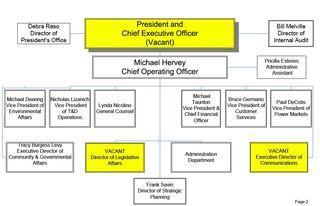"Bureaucracy has committed murder here in the greater New Orleans area."
Remember that famous line from the aftermath of Hurricane Katrina? In case you've forgotten, here's the awful story.
The week after Katrina devastated the Gulf Coast. Aaron Broussard, then-president of Jefferson Parish, Louisiana, sobbed on national television as he spoke to the late "Meet the Press" host Tim Russert, recounting the death of the mother of his county’s emergency services director. Eva Rodrigue, 92, along with perhaps thirty or more residents, drowned in St. Rita’s Nursing Home, after what Broussard described as days of bureaucratic promises broken.
He ticked off the list of the guilty:
“Were we abandoned by the federal government? Absolutely we were…nobody came here, sir. Nobody came. The federal government didn't come. The Red Cross didn't come. I'll give you a list of people that didn't come here, sir, and I was here…Did inefficiencies, did bureaucracy commit murder here? Absolutely, it did.”
We've yet to hear that bureaucracy is being charged with murder following Superstorm Sandy but the reports of massive dysfunction at the Long Island Power Authority certainly suggest organizational culpability. Consider this from Danny Hakim, Patrick McGeehan, and Michael Moss's piece in Tuesday's NY Times:
Customers have been exasperated not only by a lack of power, but also by the authority’s inability to communicate basic information. Long Islanders have recounted tales of phones unanswered at authority offices, of wildly inaccurate service maps and of broken promises to dispatch repair crews.
It gets worse (or is still worse--as of this writing 8,000 are still without power more than two weeks after the storm) and it's really echo-y of what Broussard said 8 years ago:
“Resources came late,” said Frank P. Petrone, chief executive of the Town of Huntington and a former official with the Federal Emergency Management Agency. “When they came, there was no management to utilize those resources effectively. And it took 10 days for them to get their act together.”
Also from Petrone who tried to plan ahead only to discover that LIPA's crews didn't communicate when they finally arrived:
“The upper management couldn’t communicate with the middle management,” he said. “The middle management couldn’t communicate with the crews. And finally, when we had sufficient crews coming in — resources that should have been arranged before — they came in and had very little direction and they were flabbergasted at the condition of the infrastructure, the wiring, the entire system.”
A quick look at LIPA's publicly available 13-page PDF organizational chart shows 3 executive-level vacancies as of August 2012. Add to that the recent resignation of its COO and LIPA's leadership team resembles Swiss cheese more than an organization worthy of public confidence and trust.

Lastly, we arrive at news that reeks of the BP spill in the beleagured Gulf of Mexico. It turns out that LIPA is a shell company that outsources its operations. Remember all the finger pointing after the BP spill as it became nearly impossible to know which company was responsible for what, who was accountable for what, and who ultimately made the bad decisions that led to the spill? Lots of outsourcing. Here's what Reuters reported on Tuesday of this week:
LIPA, however, is a state-owned shell company that has only about 100 employees [all of whose positions are represented on their publicly available org chart]. It has outsourced the operation of its electric system to a unit of British power company National Grid PLC, which has said it is responsible for implementing LIPA's restoration plan.
Outsourcing is not necessarily a bad thing. It's just that if you outsource, leadership must be fixated on clear lines of communication and have complete confidence in the competence of outside organization(s). And in yet another twist to the story, National Grid is "set to hand operations over to a unit of New Jersey power company Public Service Enterprise Group Inc in 2014," according to a Nov. 6, 2012, Reuters story. Although our research on this is still to be completed, it's likely that National Grid currently has massive outsourcing operations itself. That, coupled with the planned turnover of operations to yet another company in a short time (PSEG), makes the accountability/commitment-to-excellence worth questioning.
Given LIPA's empty leadership and problematic outsourcing, it is no wonder that a historic Frankenstorm is causing so much suffering. Going forward, it would be interesting to use OrgScope to fully analyze LIPA's (and/or National Grid's) organizational structure, examine lines of communication, and provide recommendations for transforming LIPA from a dangerous disconnected bureacracy to a fluid, communication-rich storm-proof network.

